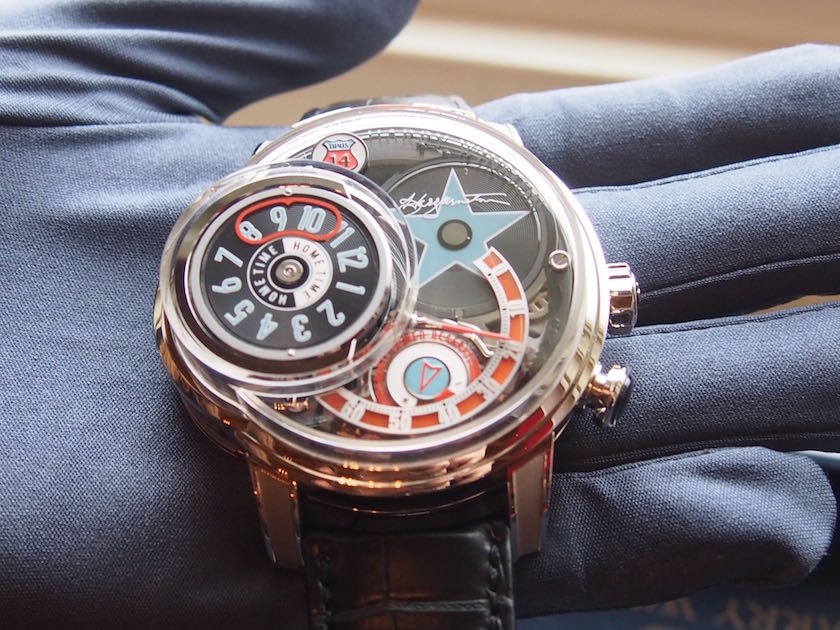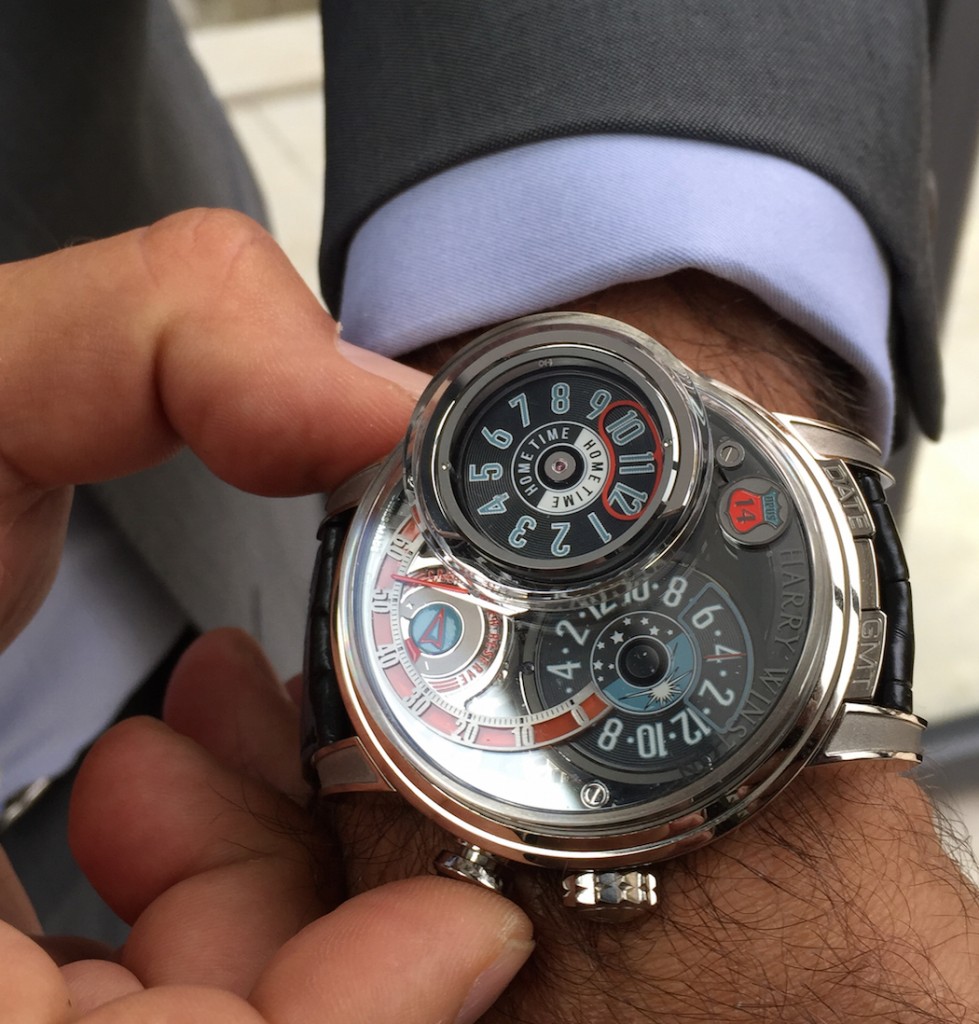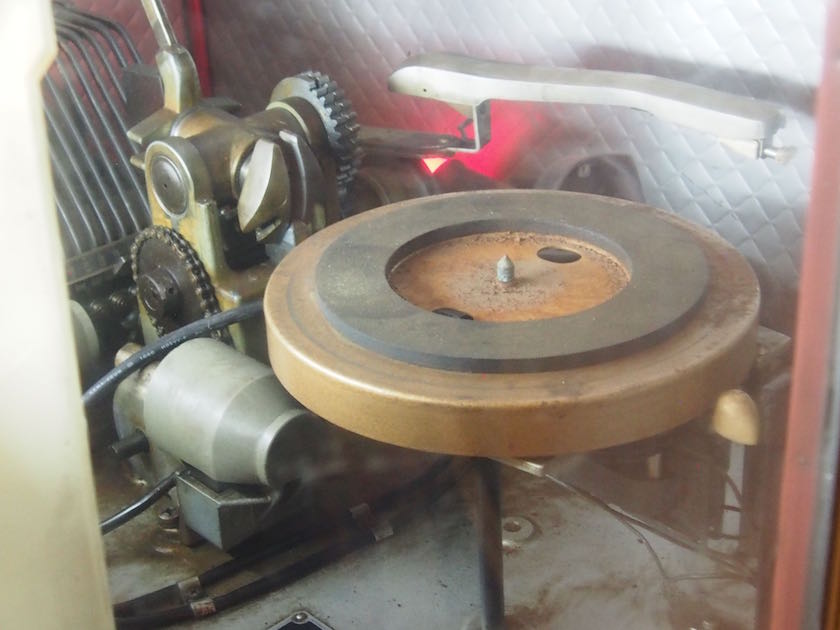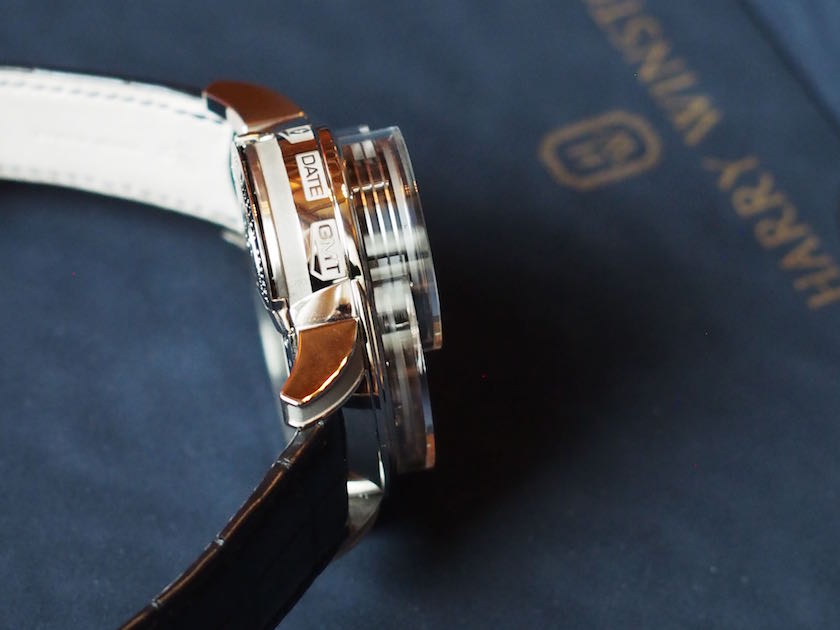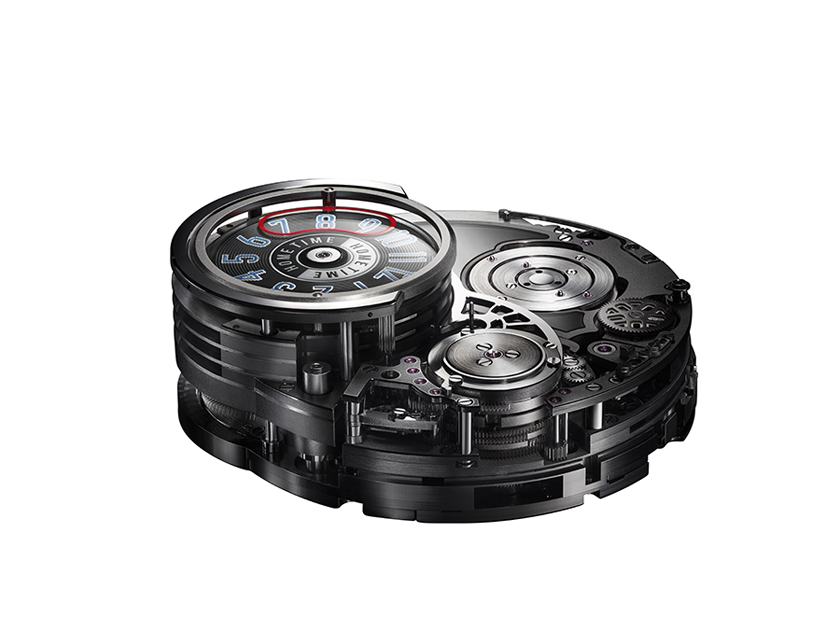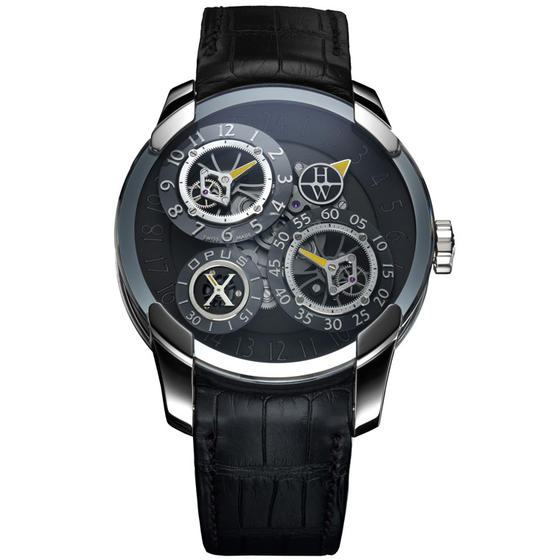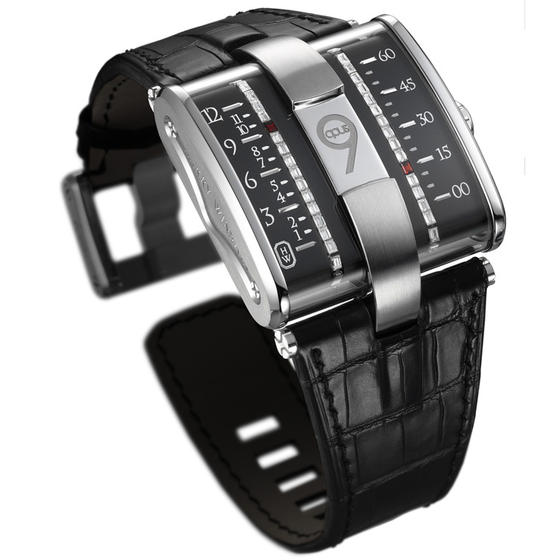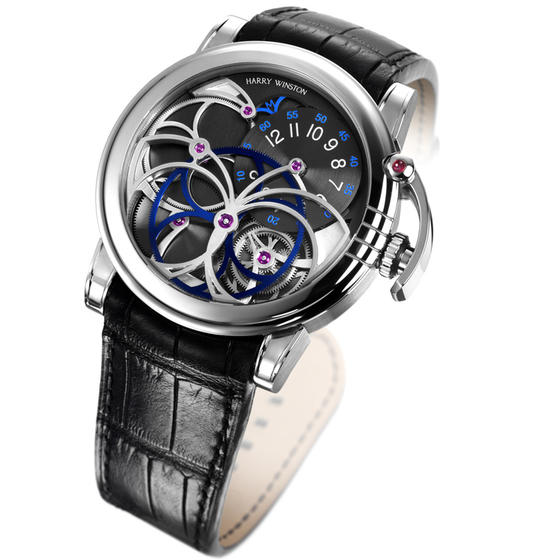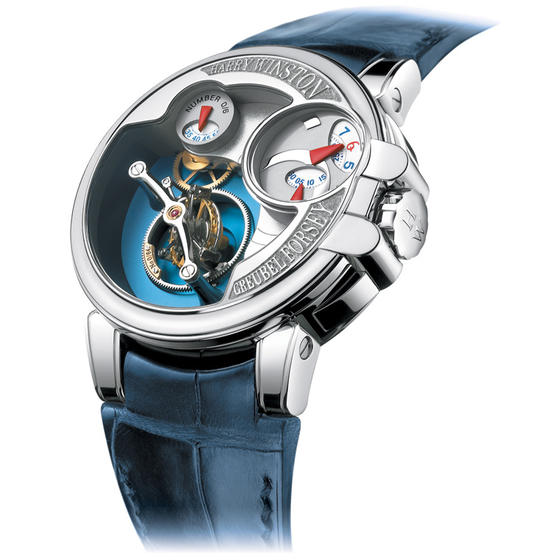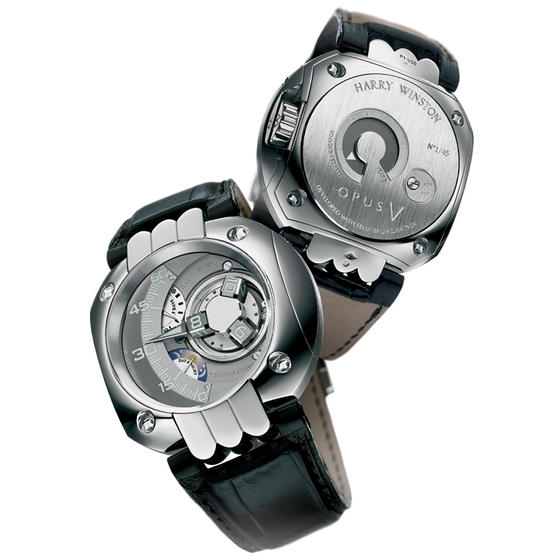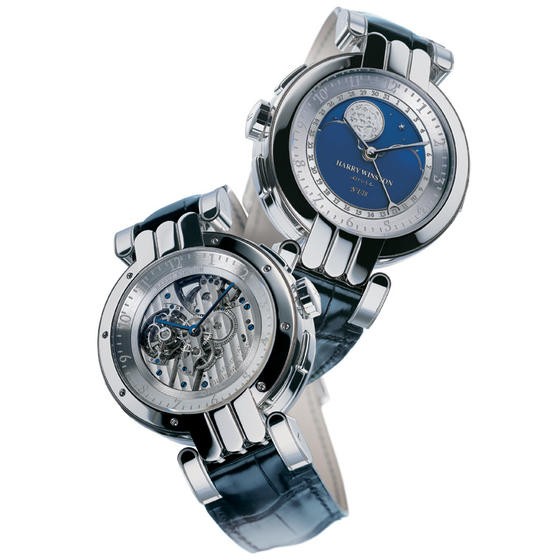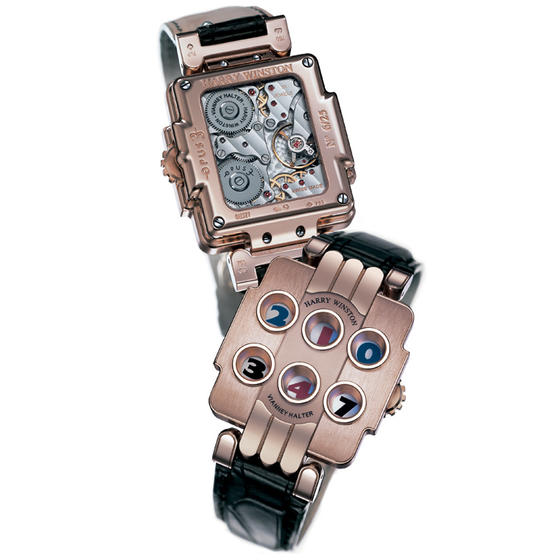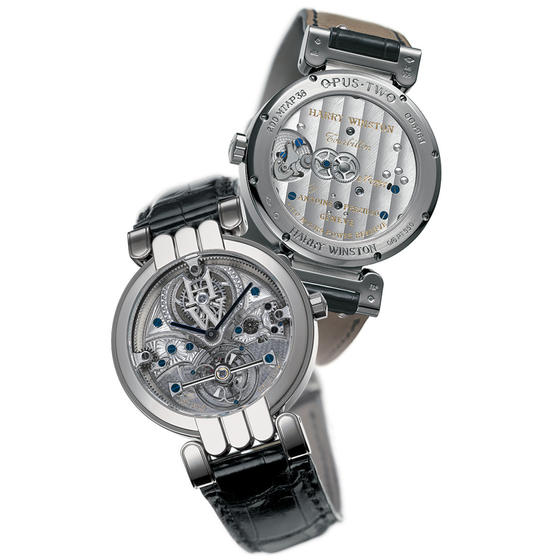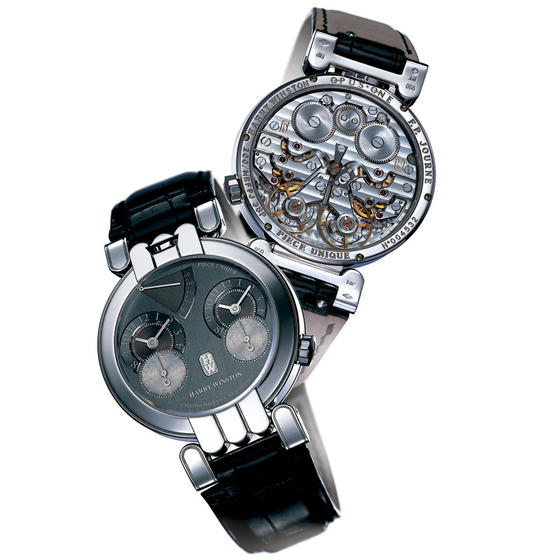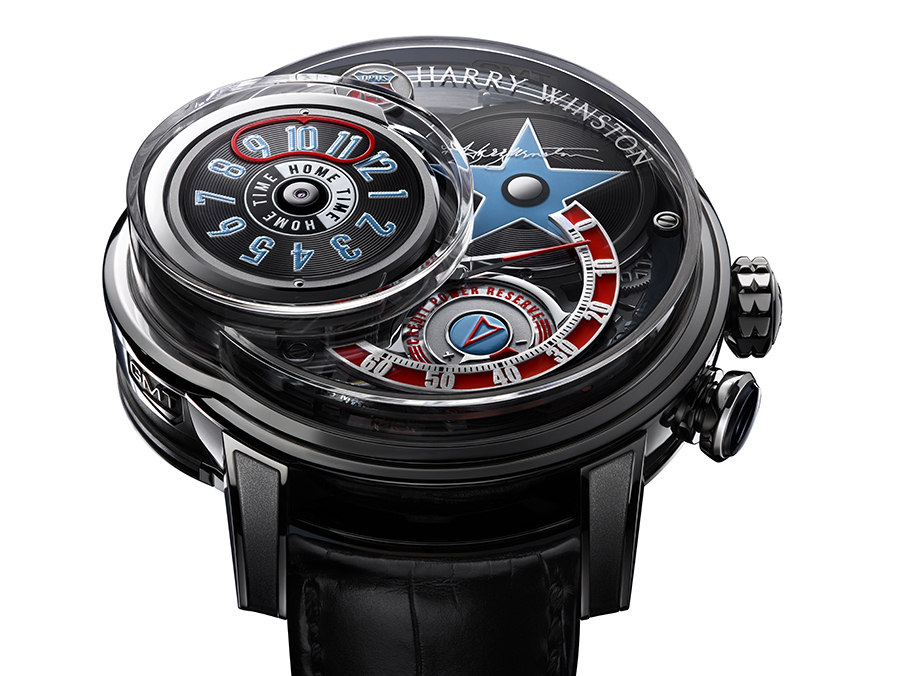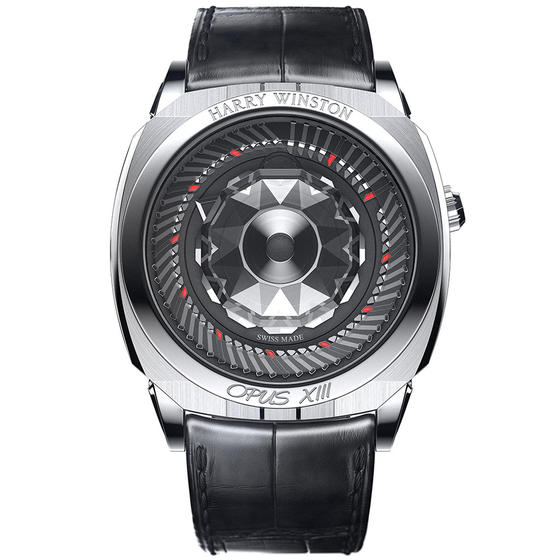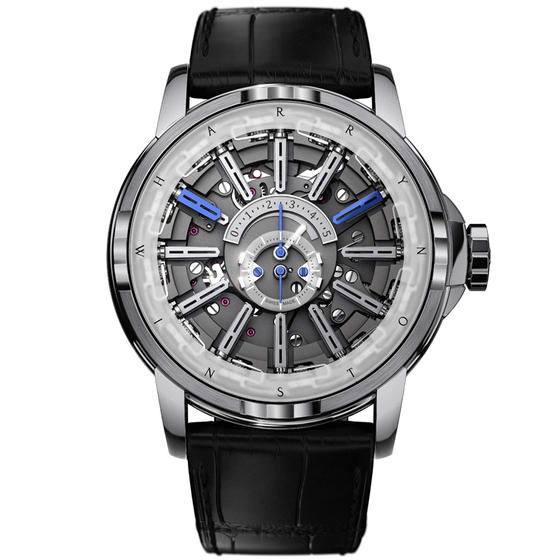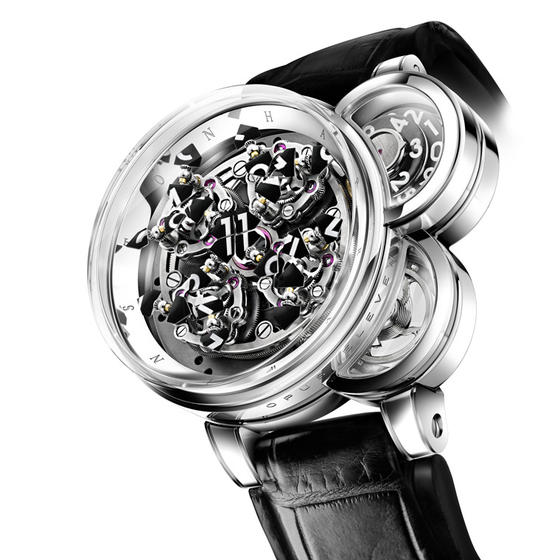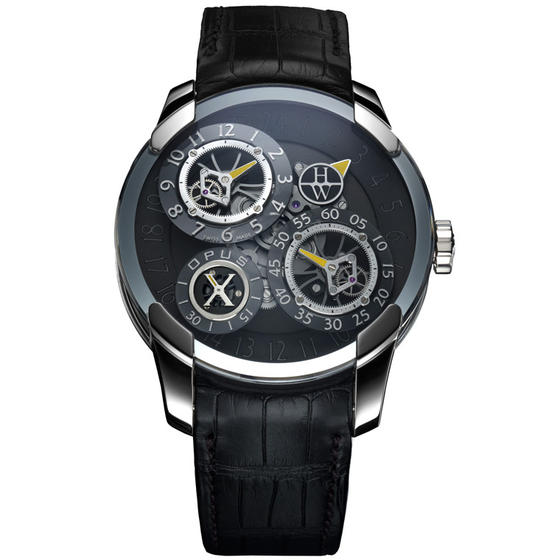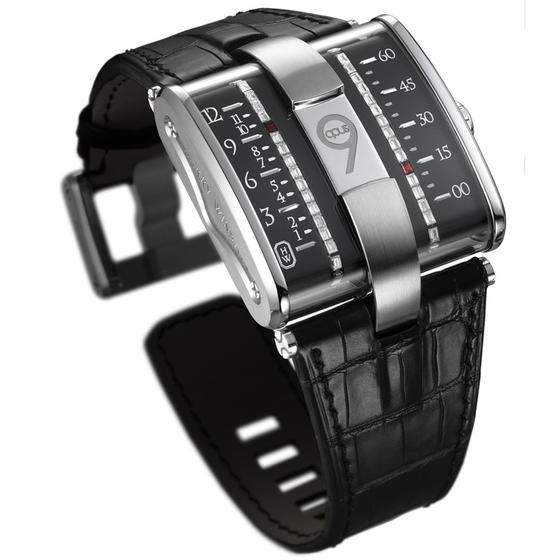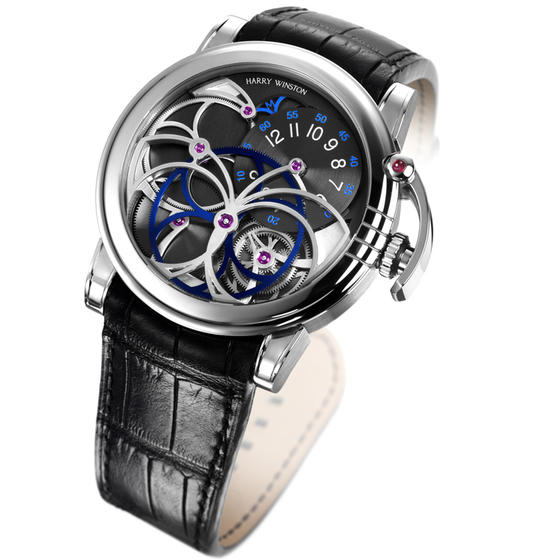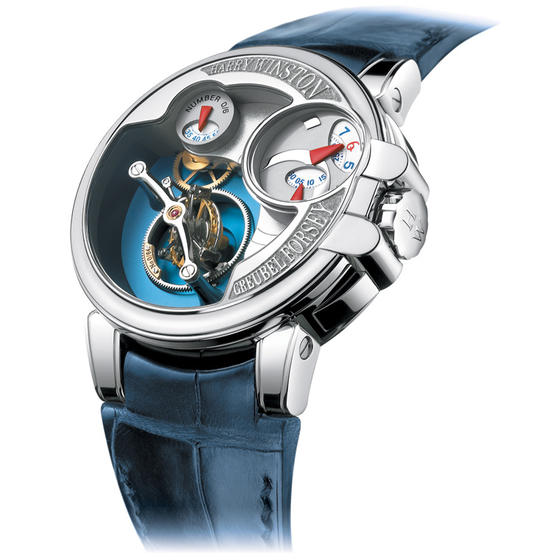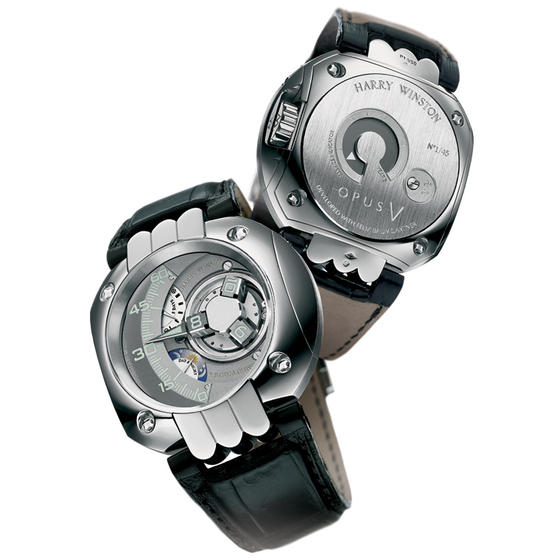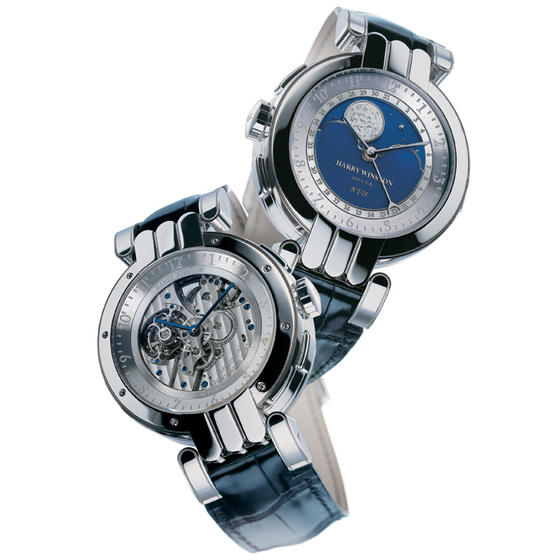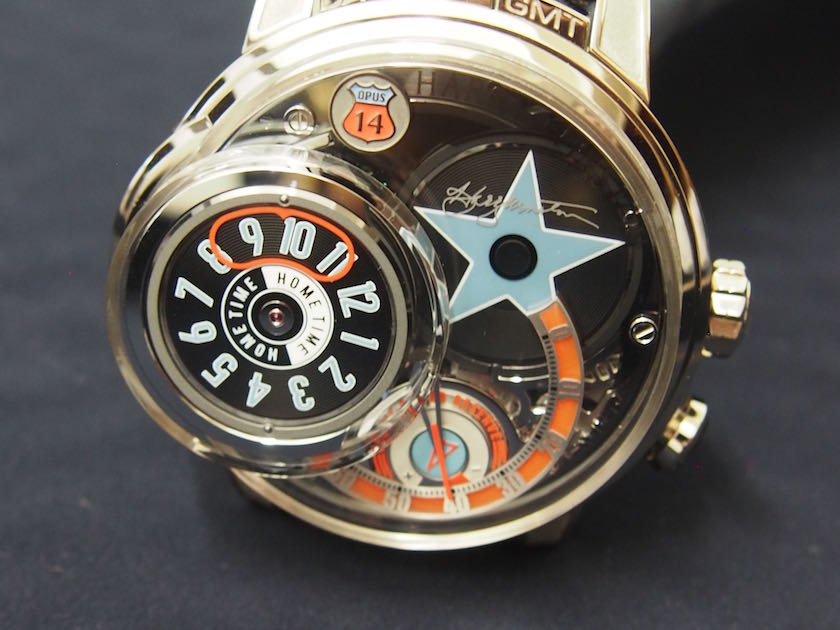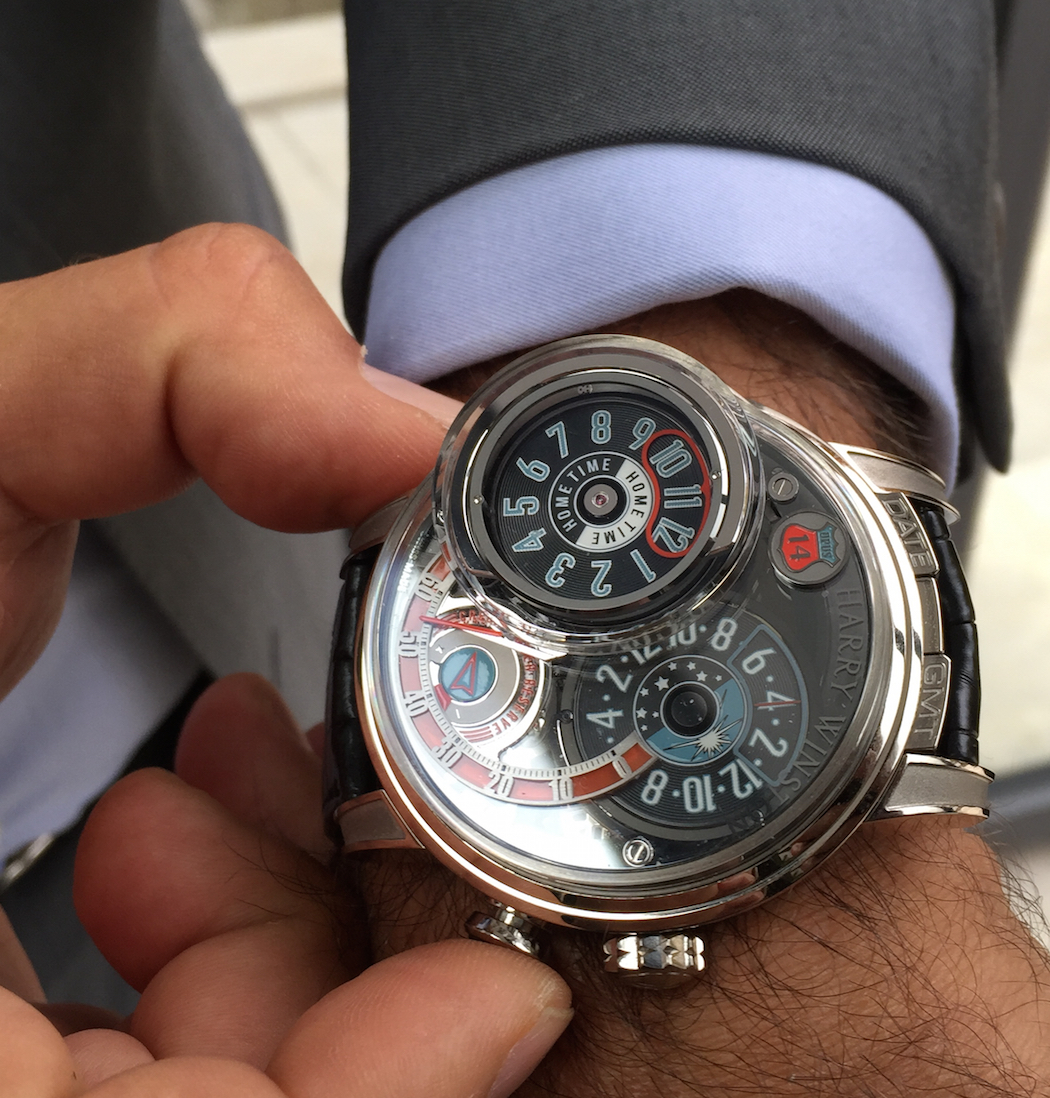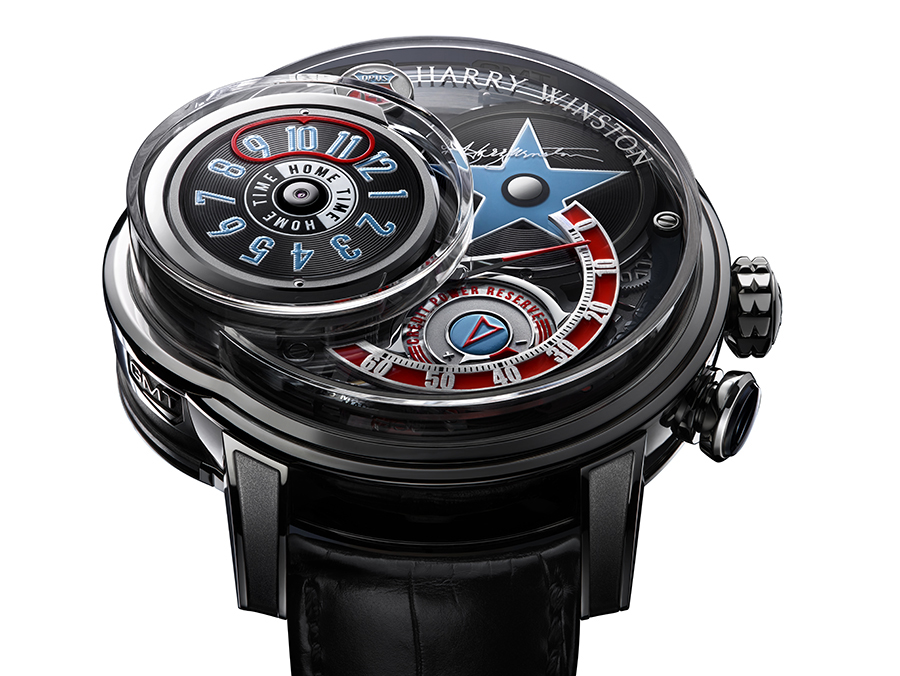Last week in Baden Baden, Germany, Harry Winston unveiled the new Opus 14 timepiece—created in conjunction with two top watchmakers, Johnny Girardin and Franck Orny of Telos Watch.
No doubt most of you have already seen images of the watch that we posted during the event on our myriad social media platforms, but now we bring you some close-up hands-on shots, a true perspective of the watch, and so much more. So go grab that cup of coffee and get ready for a rock n’ roll read.
Opus 14
Referred to as a jukebox on the wrist, Opus 14 is a high-powered world’s first with all the technical bells and whistles one would expect from an Opus watch. While it does not play music, it’s technology is inspired by the 1950’s style juke boxes that would pick up a record, move it onto a phonograph and play the song.
The automaton complication consists of multiple disks that stack up on one side of the dial and is housed within its own sapphire crystal that rises above the main dial. With the push of a button at 9 o’clock, one of four different disks — GMT, local time, date and a Harry Winston “star” (recalling the Harry Winston Hollywood Walk of Fame star) — is released. Then, with the press of a button at 4 o’clock, a moving arm is activated that actually picks up the disk, swings it over and sets it onto the platform to be read. The release of the proper disk is executed via a vertical up/down movement within the storage unit holding the four disks.
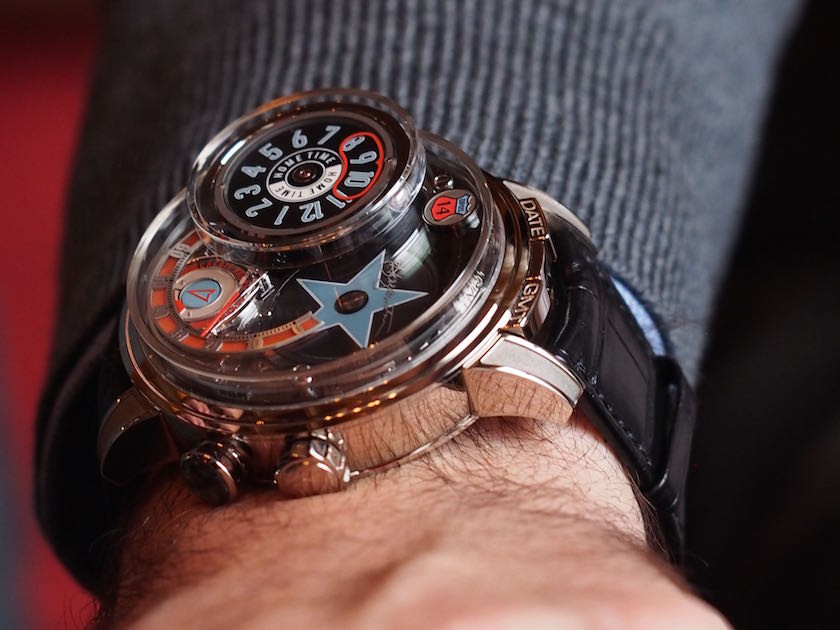
Harry Winston Opus 14 On the wrist — demonstrates the architectural dimension of the watch (photo: @ R.Naas)
“What makes it so special is that the owner can interact with the timepiece, just like with a jukebox,” says Johnny Girardin, “and it offers a lot of information.”
The miniaturization of the jukebox mechanism to function within a timepiece is a technical marvel that was more than three years in the making. According to Franck Orny, the most challenging part of the watch technically was developing the vertical disk clutch and ensuring precision performance with regular wear.
“It took 18 months to develop the moving disk concept but then, with the help of Blancpain, it took another 18 months to test and retest it to be sure the energy to power the disk worked again and again and again. It was tested 4,500 times by Blancpain,” says Orny. “We tried several versions of the watch and even had some mistakes along the way,” he quips, “but we just kept moving forward because we knew the concept was right.“
Each disk change takes about 8-1/2 seconds to complete the cycle from disk release, pick up by arm and placement into the designated spot. It is 8-1/2 seconds of rapture. The moving of the disk is accompanied by the actual mechanical sound – much like the old jukeboxes. “We didn’t want to silence the sound,” says Marc Hayek. “It is part of the beauty of the watch.” (You can watch a video of the disk change below.)
While the watch is large, at just over 54mm in diameter, it doesn’t look too large on the wrist. In fact, thanks to the multi-level architecture of the case, dial and crystals, it has a very avant-garde appeal – even though it recalls the heady days of the ‘50’s, complete with road trips in great American muscle cars, drive-in diners, rock n’ roll and more.
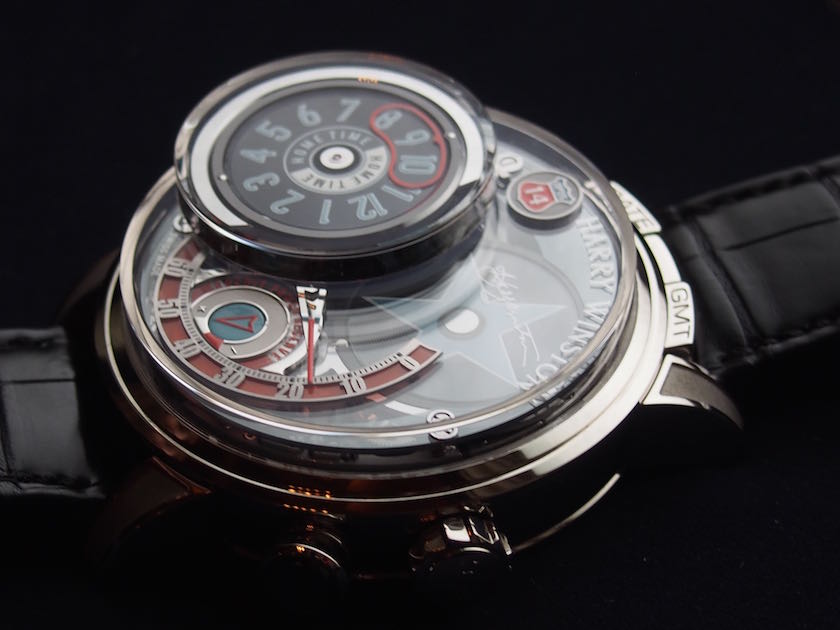
The disks that emerge to depict GMT, local time and other information are stored in a tall sapphire crystal that stands taller than the rest of the dial (photo R. Naas)
The 54.7mm Opus 14 is crafted in 18-karat white gold and – in addition to being a horological masterpiece in concept and execution – it features an all-American design worthy of the American brand. The color codes of red, white, light blue and black scream Route 66 and America. Even the oversized star and the Opus 14 logo –a shield shaped like the old “Route” signs in America – have a nostalgic, patriotic appeal. The vinyl-style finish on the different dials is reminiscent of vinyl records and acts as an added touch that ties the entire jukebox/rock ‘n roll concept together – embracing the 1950’s fun-loving American lifestyle.
“It’s Hollywood, it’s American, it’s Harry Winston, no doubt about it,” says Nayla Hayek.
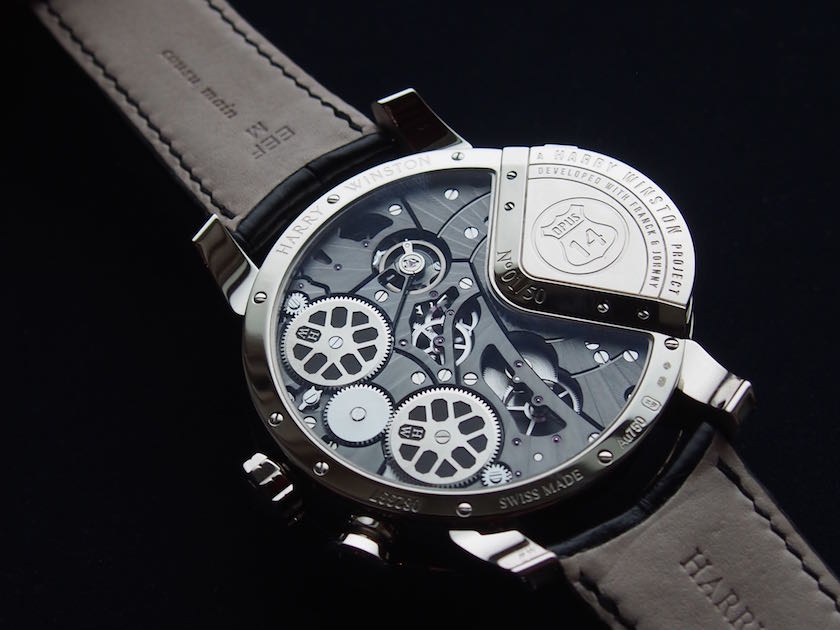
The movement of Opus 14 is visible via a transparent casebook, where the power reserve can also be seen (photo: R.Naas)
The HW 4601 manual wind automatic movement, patented by Harry Winston, consists of 1,066 parts and 124 jewels. It’ uses a silicon balance spring and has 31 individual bridges. The watch is equipped with two barrels. One powers the movement’s tmekeeping and offers 68 hours of power reserve (visible on the caseback of the watch). The second enables a total of five back-and-forth disk changes, and that power reserve is visible on the front of the dial, integrated into the bold design via a red arc format.
It is just too bad that only 50 of this watch will ever be made. Its retail price, just about $435,000 – is, in my opinion – worth every American cent.
Keeping Opus in the Fold
When the Swatch Group purchased Harry Winston a couple of years ago, there was much speculation about whether or not the brand would continue creating the famed Opus series.
First started in 2001, by MB&F’s Max Busser when he was head of Harry Winston, the Opus series is the epitome of creativity and innovation. The concept—working with independent watchmakers to create something totally new and different in the watchmaking realm – -took hold immediately.
I recall the first time Max Busser told me about the concept. It was an incredibly divergent move for a top brand like Harry Winston for multiple reasons, not the least of which was the fact that 14 years ago (and even more, when one considers it took a few years for that first Opus to be developed), independent watchmakers were not as celebrated as they are today. They had a backseat role to the big brands, and, in fact, mostly just worked behind the scenes for those big brands (with the exception of a noted handful). The concept of putting one of those master watchmakers out on display was revolutionary.
That first Opus One watch – created with Francois-Paul Journe (who did not have his own brand yet) – was a winner. The watch, and the concept, caught on big time and since then, we have witnessed the unveiling, heretofore, of 3 previous Opus timepiece collections. Therefore, the very idea that, under the Swatch Group ownership, Harry Winston would not continue the Opus had many a watch-collecting fan standing up and keeping vigilant watch (pardon the pun).
Thus, the announcement earlier this year that we would, indeed, see a new Opus was like music to watch collectors’ ears. Funny, that the concept of the new watch should also be musical in theme. You can view a slide show of the entire Opus collection below, but before we get to that, we have a little more business to attend to when it comes to the Opus 14.
Objections
To begin with, some people won’t like this bold watch because of its decidedly American theme (too bad, it’s gorgeous up close and personal). Additionally, some people say it is not in keeping with the Opus concept (too bad, it is – both Girardin and Orny are independent watchmakers who banned together at Telos. Also, let’s be clear, this is not the first time an Opus was built by two watchmakers instead of one).
Finally, let’s not ignore the elephant in the room: some say it may not be right to bring out Opus 14 when Opus 13 has not yet been put into production (again, too bad). While Swatch Group won’t talk about the on-going discussions with Opus 13 creator Ludovic Ballouard, whose ingenious design was created and unveiled back in 2013, before the full takeover of the brand by the Swatch Group, the fact is that despite this sad turn of events, life of the Opus series must go on. Thus, many of us are grateful that Swatch Group continues to create Opus watches.
In fact, says Marc Hayek, “Opus 15 is already underway.” Bravo.
SLIDE SHOW of the 14 Opus watches
Opus 10 with Jean-Francois Mojon, 2010
Opus 9 with Jean-Marc Wiederrecht, 2009
Opus 8, with Frederic Garinaud, 2008
Opus 7 with Andreas Strehler, 2007
Opus 6 with Greubel & Forsey, 2006
Opus 5 with Felix Baumgartner, 2005
Opus 4 with Christophe Claret, 2004
Opus 3, with Vianney Halter, 2003
Opus 2, with Antoine Preziuso, 2002
Opus 1 with F.P. Journe, 2001
Opus 14 with Johnny Girardin, Franck Orny (Telos Watch), 2015
Opus 13 with Ludovic Ballouard, 2013
Opus 12 with Emmanuel Bouchet, 2012
Opus 11 with Denis Giguet, 2011
Opus 10 with Jean-Francois Mojon, 2010
Opus 9 with Jean-Marc Wiederrecht, 2009
Opus 8, with Frederic Garinaud, 2008
Opus 7 with Andreas Strehler, 2007
Opus 6 with Greubel & Forsey, 2006
Opus 5 with Felix Baumgartner, 2005
Opus 4 with Christophe Claret, 2004
HW_Opus_14_OPUMHM55WW001_movement_whiteBG_LD
marc hayek
hw o14
opus 14 side
movement side of opus 14
opus
harry winston opus 14
The inner workings of a 1950's jukebox
harry winston opus 14 on the wrist
hw Opus 14
Opus 14 with Johnny Girardin, Franck Orny (Telos Watch), 2015


